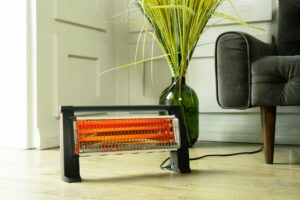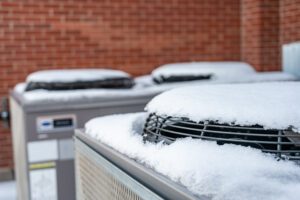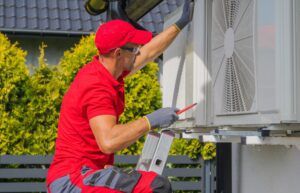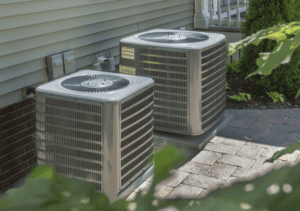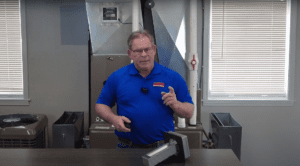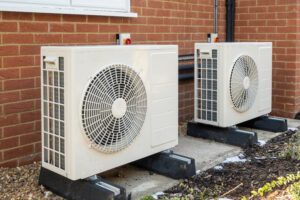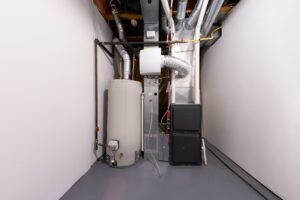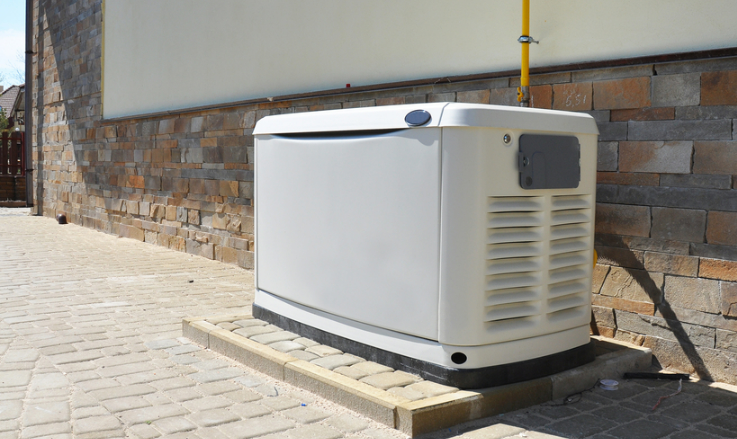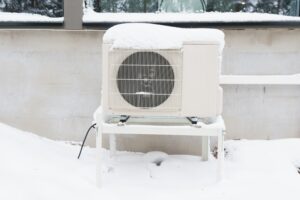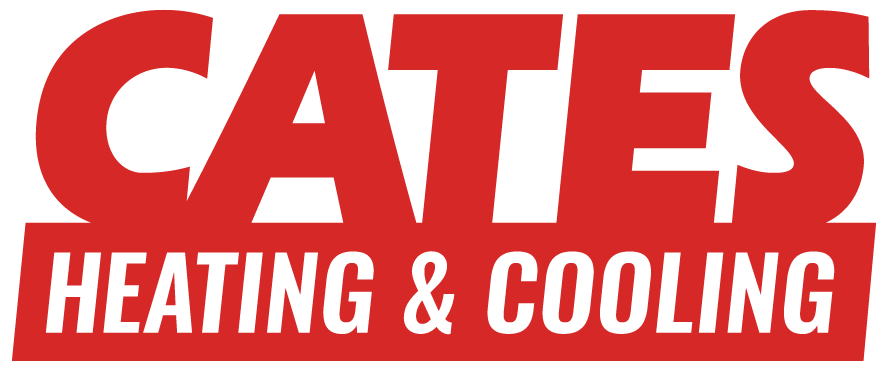There are a number of different extras that you can attach to your HVAC system to make your home more comfortable for you and your family. These products can also add convenience to your daily life. Cates Heating and Cooling is here to break down all of the add-ons for you!
GENERATORS
We all tend to take electricity for granted. We expect that we will have it at any time, no matter what is going on. However, weather, accidents, and other forces can quickly take electricity from our homes without warning. Cates Heating and Cooling has a little advice on how to choose a home generator to keep around just in case you lose power to your home.
ADVICE FOR CHOOSING A HOME GENERATOR
There are two main types of generators. The first is portable. These are the smaller generators that you can tote around to use outside of your home. If you are hoping to bring your generator to a tailgate or when you go camping, then you should probably consider a portable option.
Portable generators are usually powered by liquid propane or gas, so you will need to have fuel around to ensure that you can use your portable generator whenever you need it. Since these gases can give off dangerous fumes, portable generators should only be used outdoors.
Other portable generators are solar powered. These portable generators can often power appliances for many hours with just one charge. They can also be used indoors, because they don’t produce any gas.
Standby generators are permanently installed in your home to act as a power back-up in the event of a power outage. They can be set to turn on automatically, so your home is given backup power whether you are home or not. These generators are powered by a permanent supply of either LP fuel or natural gas. This allows them to kick on after just a few seconds of no electricity.
To learn more about both of these generator types, check out our blog post about home generators.
HUMIDIFIERS
When the air in your home gets really dry, you will notice. First, static electricity will start to become a nuisance. You might also notice changes to your body. Dry air tends to lead to dry throats and skin. To combat this problem, Cates Heating and Cooling recommends getting a whole-home humidifier.
Whole-home humidifiers benefit your household in many ways. First, they add moisture to the air to combat bloody noses, dry skin, static, and other discomforts that come with the dry air of winter. Additionally, a whole-home humidifier makes it easier to add moisture to the air of your home. You don’t have to worry about making sure they are clean and full of water like you would with a portable humidifier. Finally, whole-home humidifiers can lead to lower utility bills, because they prevent your HVAC system from working overtime to maintain a specific temperature.
Since germs can spread more easily in cold, dry air, a whole-home humidifier can also keep your family from coming down with the flu or a cold.
To learn more about whole-home humidifiers, check out our blog post!
DEHUMIDIFIERS
Is the air in your home sticky and moist? If so, you probably need a dehumidifier to help make things a bit more comfortable in your house. There are portable dehumidifiers that will help keep a single area in your home comfortable, and there are whole-home units that work to balance the humidity levels in your entire house. Cates Heating and Cooling is here to explain whole-home dehumidifiers to homeowners.
WHOLE-HOME DEHUMIDIFIERS
Whole-home dehumidifiers work with your HVAC system to remove moisture from the air in your home through your ductwork. Warm, moist air is brought into your HVAC system where it is cooled. The drop in temperature causes the moisture in the air to condense into water droplets. The water droplets are collected in a pan or drained directly down a drain. The air, which now doesn’t contain water, is passed over warm coils to bring it back up to the desired temperature.
These dehumidifiers can be installed in both new and existing homes, and they allow better control over the moisture in your home than portable dehumidifiers, which can only remove the moisture from one room at a time.
BENEFITS OF WHOLE-HOME DEHUMIDIFIERS
There are quite a few benefits to having a whole-home dehumidifier installed. Here are a few:
- Dehumidifiers help your air conditioner work more efficiently, because it is easier to cool dry air.
- Dry air feels cooler, so you might be able to run your air conditioner a few degrees warmer and save money on your cooling bills.
- Reducing indoor humidity can prevent mold and mildew from growing inside your home.
- Drier air prevents dust mites and allergens from thriving, which can help people with allergies and asthma.
- Whole-home dehumidifiers are up to four times more energy efficient than portable humidifiers.
- Whole-home dehumidifiers require a lot less maintenance than portable dehumidifiers.
- Whole-home dehumidifiers are located out of sight and produce less noise than a portable option.
For many homeowners, whole-home dehumidifiers are more convenient than a portable option.
MISCONCEPTIONS ABOUT WHOLE-HOME DEHUMIDIFIERS
Even though there are a lot of benefits to having a whole-home dehumidifier installed in your home, there are still misconceptions about these systems. Here are some of the most common:
Myth #1: They are more expensive than portable dehumidifiers
Whole-home dehumidifiers do tend to cost more than off-the-shelf portable dehumidifiers, but they are larger and have larger parts. This means that they can remove the moisture from the air of more rooms at a time. Whole-home dehumidifiers have a much larger capacity, so they don’t need to run as frequently, and they can control the humidity in more than one room at a time, which portable humidifiers can’t do.
Myth #2: They are hard to install
Whole-home dehumidifiers may seem tricky to install, but the best thing you can do is hire an HVAC company to install your dehumidifier to make sure that it is properly and safely installed. For a trained professional, installing a whole-home dehumidifier is a pretty easy process. In most cases, the only thing that is unique about installing a whole-home dehumidifier is that it needs a drainage line.
Myth #3: They have special electrical needs
Residential humidifiers don’t have any special electrical needs. While industrial models may require a special outlet, these are never installed in homes.
If you are interested in having a whole-home dehumidifier installed in your home, contact us today. We would be happy to answer any questions for you and help you determine the make and model that you would like to have installed in your home.
THERMOSTATS
Thermostats come in a variety of forms. There are non-programmable thermostats, programmable thermostats, Wi-Fi-connected thermostats, and smart thermostats. While all thermostats perform the same basic function—controlling the temperature of your home—they aren’t all equal. Some thermostats are equipped to do a lot more than others.
NON-PROGRAMMABLE THERMOSTATS
If you just want to be able to change the temperature in your home, a non-programmable thermostat is probably what you are looking for. These thermostats allow you to change the temperature by accessing the thermostat at the immediate time of the change of the setting. Non-programmable thermostats are great for people who don’t like the fuss of new technologies.
PROGRAMMABLE THERMOSTATS
Programmable thermostats can make life a bit easier for those who are always coming and going. These thermostats allow you to change the temperature based on the time. Programmable thermostats have different abilities. Some will only allow you to choose a morning temperature and an evening temperature. Other thermostats will let you program them based on different times for different days. Other models allow you to choose up to four different temperatures during a 24-hour time period.
No matter what type of programmable thermostat you have, they will offer a greater range of function than a non-programmable thermostat.
WI-FI THERMOSTATS
Tech-savvy people are turning towards thermostats with even more capabilities. Wi-Fi thermostats can be controlled via the Internet. You can also control a Wi-Fi thermostat via a connected device, such as your cell phone, by using an app. These thermostats can be programmed to perform certain actions and controlled from outside of your home.
SMART THERMOSTATS
Smart thermostats are like Wi-Fi thermostats on steroids. Smart thermostats not only also for programming, but they also learn about your routine and can adjust the temperature in your home accordingly. The ability for a smart thermostat to adapt makes them highly desirable for some consumers. They can also be controlled from afar via an app on your phone should you need to make any changes to the settings while you are out.
These are the most popular types of thermostats on the market. If you are interested in learning more about any of these thermostats, contact us. We would love to help you get a new thermostat installed in your home.
AIR PURIFIERS
Clean air is something that most people value having in their homes. Air purifiers are the easiest way to ensure that the air in your home is as clean as possible. There are so many different kinds of air purifiers that is can be a little bit overwhelming for homeowners to know which direction to turn to. Cates Heating and Cooling is here to help.
UV AIR PURIFIERS
UV air purifiers use UV light, which contains electromagnetic radiation, to kill off bacteria that lives in the air. They can also kill viruses, mold, and yeast. However, most UV air purifiers can’t prevent allergens, dust, and other solids from floating in your air. Additionally, they can’t help remove cigarette smoke, gases, or chemical fumes from the air.
IONIC AIR PURIFIERS
Ionic air purifiers use ion generators to send out a steady stream of negatively charged ions that attract allergen particles, dust, and other debris that has a positive charge. The ions modify the stuff in your air until they are too heavy to stay in the air. When the particles fall to the floor, you can sweep or vacuum them up. These purifiers can also get rid of secondhand smoke in your home, and they are very affordable.
CARBON FILTRATION SYSTEMS
Activated carbon filtration systems can also keep the air in your home cleaner and healthier than before. The activated carbon can absorb large amounts of allergens and contaminants, which removes them from the air of your home. In most cases, these systems are best when used in conjunction with HEPA air purifiers.
OZONE AIR PURIFIERS
Ozone air purifiers can be used to oxidize the contaminants in the air of your home. These air filters can also remove foul smells from your home. Ozone purifiers can be dangerous to small animals, however. Additionally, they are best used for commercial and emergency situations. For example, if your home floods, ozone purifiers can help kill all the germs, mold, and mildew in the air quickly.
HEPA AIR PURIFIERS
HEPA air purifiers are another common purification system. These systems use HEPA filters, which contain three separate components to trap small particles in the air. The first stage takes contaminants out of the air. Any contaminants that are too large are removed via impaction, a process that embeds them into the filter. The final stage is called diffusion. During the diffusion process, the filter disrupts the flight pattern of particles in the air, which makes it easier for the first two stages to work properly. HEPA air purifiers are considered the best air purification systems on the market.


